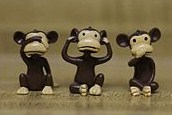There are plenty of reasons to want to ban bullfighting, but claiming that it is un-Catalan is simply a stupid lie. John Chappell recently tore into this notion, noting that the 1835 uprising here was triggered by a bad fight, I’ve posted a couple of times (1/2/3), and I’ve just come across a good article by Jacques Durand in Libération (2004/4/22) that lays waste to the whole argument.
Mr Durand certainly knows his stuff, describing 15th and 16th century evidence of fights here; Barcelona’s status from 1927 to the 60s, with its three arenas and profusion of fights, as the centre of Spanish bullfighting; the near-riots when Luis Miguel Dominguín (Picasso was godfather of his third child, Paola, and he finished his career in Barcelona) stayed at Hotel Oriente on la Rambla after the death of Manolete, whose death he was accused of having caused, how he walked from his hotel through a hostile mob to the ring and was carried from it, triumphant, on their shoulders; the Catalans in Céret, over the border, who integrate Catalanism with bullfighting, performing the separatist sardana, La Santa Espina, on the death of the fifth bull during the July fights; the award in 1988 by Pasqual Maragall, then mayor of Barcelona and currently president of the regional government, of the city’s gold medal for artistic merit to bullfighter Joaquín Bernado, a carpenter’s son from the Paralelo/Paral·lel; and he ends pointing out the paradox of a sport involving home-grown talent being declared un-Catalan while el Barça – a Dutch-run team that relies on a Brazilian star to win a game invented by the British – is embraced by the ethnic thought-police. However, what really interested me was the stuff about Mario Cabré.
I’d heard of Mr Cabré as a bullfighter. What I didn’t know was that he was also an actor and a poet (as well as a fashion model and a television presenter). According to Mr Durand, he appeared in Albert Lewin’s Pandora (1951) and financed and played in some 20 pieces by Catalan authors in productions at Barcelona’s Romea Theatre. “I am a bullfighter and a Catalan,” he said, “which is equivalent to being a bullfighter two times over.” His poetry – which Mr Durand says was in Catalan, although I have some doubts (MP3 here) – apparently filled 15 volumes, and, in a poem addressed to Ava Gardner, with whom both he and Dominguín are said to have been familiar, he wrote of the cape with which he entranced his public, “half-sugar, half-water”.
Similar posts
Back soon

performing the separatist sardana La Santa Espina..to me this kind of wording sounds as if it’d been taken straight out of a Franco-time police report.. well, here’s the lyrics by writer Angel Guimerà (“Terra Baixa”). Please do explain what exactly you deem to be an intrinsically “separatist” stance here, I’m at a loss:
Som i serem gent catalana
tant si es vol com si no es vol,
que no hi ha terra més ufana
sota la capa del sol!
Déu va passar-hi en primavera
i tot cantava al seu pas.
Canta la terra encara entera
i canta que cantaràs!
Canta l’ocell, lo riu, la planta
canten la lluna i el sol.
Tot treballant la dona canta
i canta al peu del bressol.
I canta a dintre de la terra
el passat ja mai passat
i jorns i nits, de serra en serra,
com tot canta a Montserrat!
Som i serem gent catalana
tant si es vol com si no es vol,
que no hi ha terra més ufana
sota la capa del sol!
Àngel Guimerà
Meaning is not intrinsic but acquired. None of the hand signals in this post has any objective significance, but the consistent association of each with a particular tendency in Albanian politics was enough to get you shot when you met adherents of other philosophies. So it was also with La Santa Espina, whose text is inoffensive and bland compared with other political ditties but whose continued use by separatists has turned it into a separatist anthem. (If someone were to ask me to nominate a future Catalan anthem, I’d go for Jaume Sisa’s Qualsevol nit, but that’s just one more pie in this Francoist (what?!) spy.)
B.B. King said, “If you a black person singing the blues, you black twice.”
One of the very first films made in Barcelona was in April 1897 of a bullfight at the Barceloneta plaza de toros. It was shown the same month at Lumiere on Rambla Santa Mónica 15